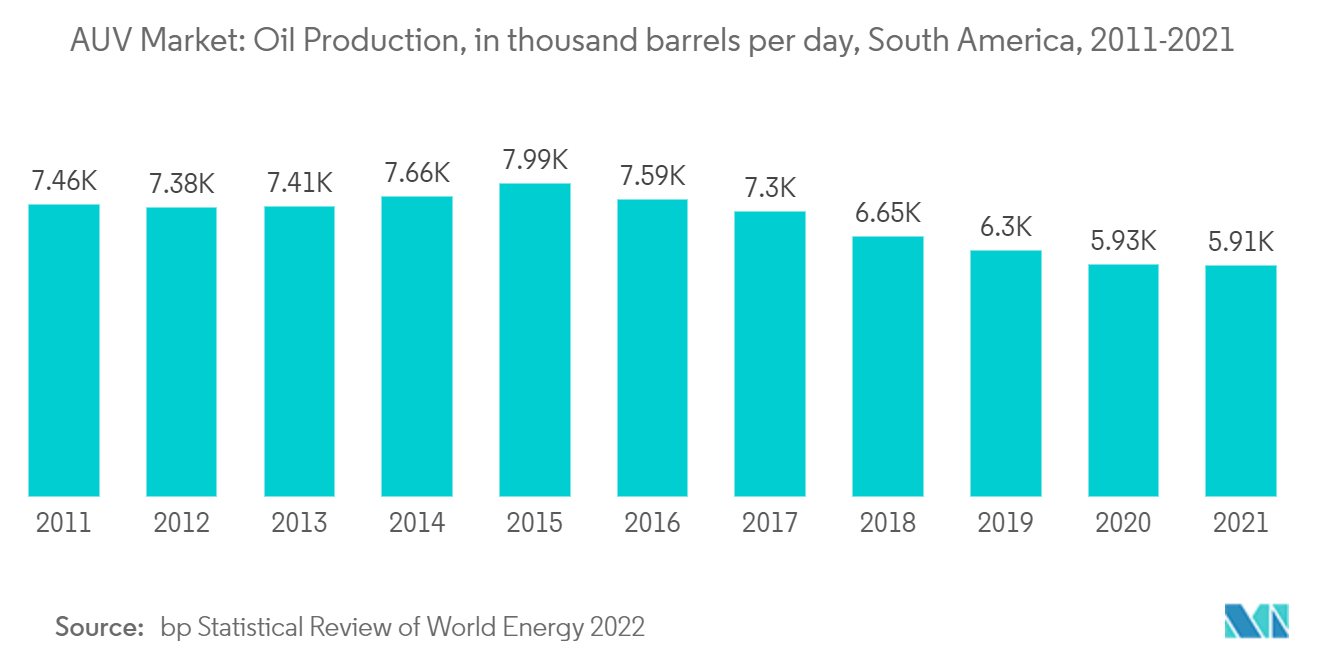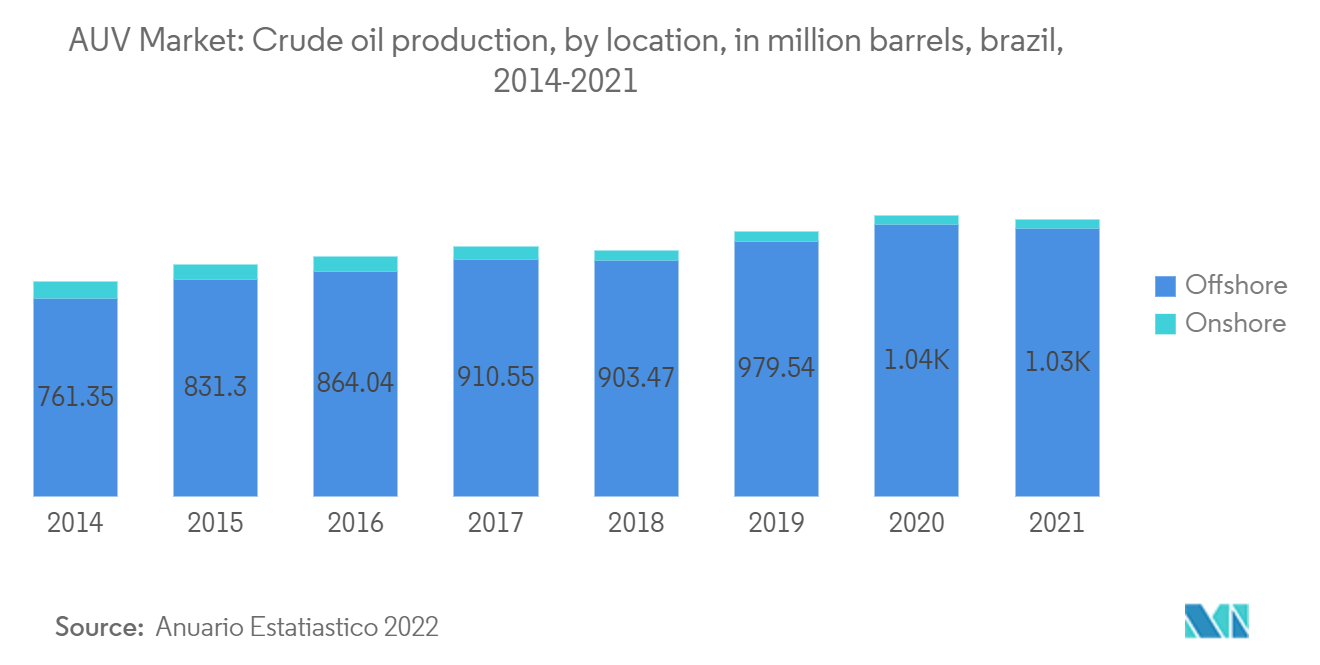Market Trends of South America AUV Industry
This section covers the major market trends shaping the South America AUV Market according to our research experts:
Oil & Gas Application to Dominate the Market
- An offshore platform is an oil and gas production facility that is located offshore. Historically, oil and gas were generally produced on the ground. Nonetheless, offshore oil and gas development has become increasingly important since there are fewer fossil fuel-rich sites that can be accessed from the ground. The number of offshore oil and gas production facilities in the world was more than 3,000 in 2016, which is expected to increase.
- As offshore platforms have a large number of subsea structures, such as pipelines, inspection and maintenance of these structures are of utmost importance. However, it is impossible for humans to dive and inspect some platforms because they are installed in water depths of hundreds of meters. Because AUVs do not have wires, they can overcome this problem, which is why their operation flexibility is their greatest advantage. It is crucial for AUVs to ensure the accuracy of position sensing in order to take advantage of this flexibility.
- AUVs are the preferred support system for deepwater drilling rigs and pipeline systems that can operate at depths of two miles. These wells and pipeline systems can be inspected, repaired, and maintained using AUVs.
- Due to the rise in the installation of underwater infrastructure for oil and gas field development, AUVs have become almost indispensable in the oil and gas industry. There have been a number of new oil and gas discoveries in the region, both shallow and deepwater, which has resulted in an increase in AUVs demand.
- South America is home to some of the largest countries in the world in terms of proven oil and gas reserves. The region also hosts one of the largest offshore oil and gas markets in the world. Brazil, Venezuela, Argentina, and Colombia are the major countries in the region's oil and gas industry.
- Offshore oil and gas projects in South America have lower breakeven prices and competitive payback times in comparison to similar projects all over the world, which makes them more resilient in the current turbulent times. Around 30 offshore oil and gas projects are expected to start across the region by 2023, which requires a cumulative greenfield investment of around USD 50 billion. These projects are operated by a mix of national oil companies (NOCs) and major independent companies.
- According to the bp Statistical Review of World Energy, in 2021, South America produced 5909 thousand barrels per day of oil.
- Hence, increasing investments in deepwater and offshore oil production activities in the region are driving the UAV market.

Brazil to Dominate the Market
- As of 2021, Brazil is the major country in South America in terms of oil and gas expenditure. The country's offshore pre-salt oil fields pumped around 50% of the total oil output, and this share increased to approximately 75% by the end of 2020. This increasing production of offshore oil and gas fields can increase the demand for AUVs in the region.
- As of June 2022, there are around seven active rigs operating in the offshore areas and three active rigs in the onshore areas of the country. As of 2021, floating assets such as floating production storage and offloading (FPSO), drillships, semi-submersibles, and floating storage and offloading (FSO) accounted for more than 80% of the active offshore platforms in the country. This, in turn, indicates the dominance of offshore floating assets in Brazil's upstream oil and gas industry.
- According to Anuario Estatiastico 2022, in 2021, Brazil produced 1028.34 million barrels of offshore crude oil and 32.03 million barrels of onshore crude oil.
- Brazil is expected to play a major role in the offshore oil and gas industry's recovery from a tumultuous 2020, especially in the floating production market. The country is expected to deploy around 18 FPSOs by 2025. In May 2021, a total of 12 engineering, procurement, and construction (EPC) groups were pre-qualified by Petrobras to bid for the P-80 FPSOs
- Petrobras has plans to invest around USD 68 billion for the period 2022 to 2026. Of this total investment, 84% is allocated to the exploration and production (E&P) of oil and natural gas. Of the total E&P CAPEX (USD 57 billion), around 67% will be allocated to pre-salt assets. This indicates that the upstream oil & gas sector, especially the offshore oil & gas assets in Brazil, is expected to witness significant investment during the forecast period.
- In December 2021, as part of its agreement with an undisclosed client, a Norwegian marine survey contractor, Argeo, is expected to provide autonomous underwater vehicle (AUV) services to the Brazilian oil and gas industry. The project is scheduled to commence early in the first quarter of 2022 and may be extended.
- Hence, increasing procurement of advanced AUVs for oil production activities in the country is driving the UAV market.


